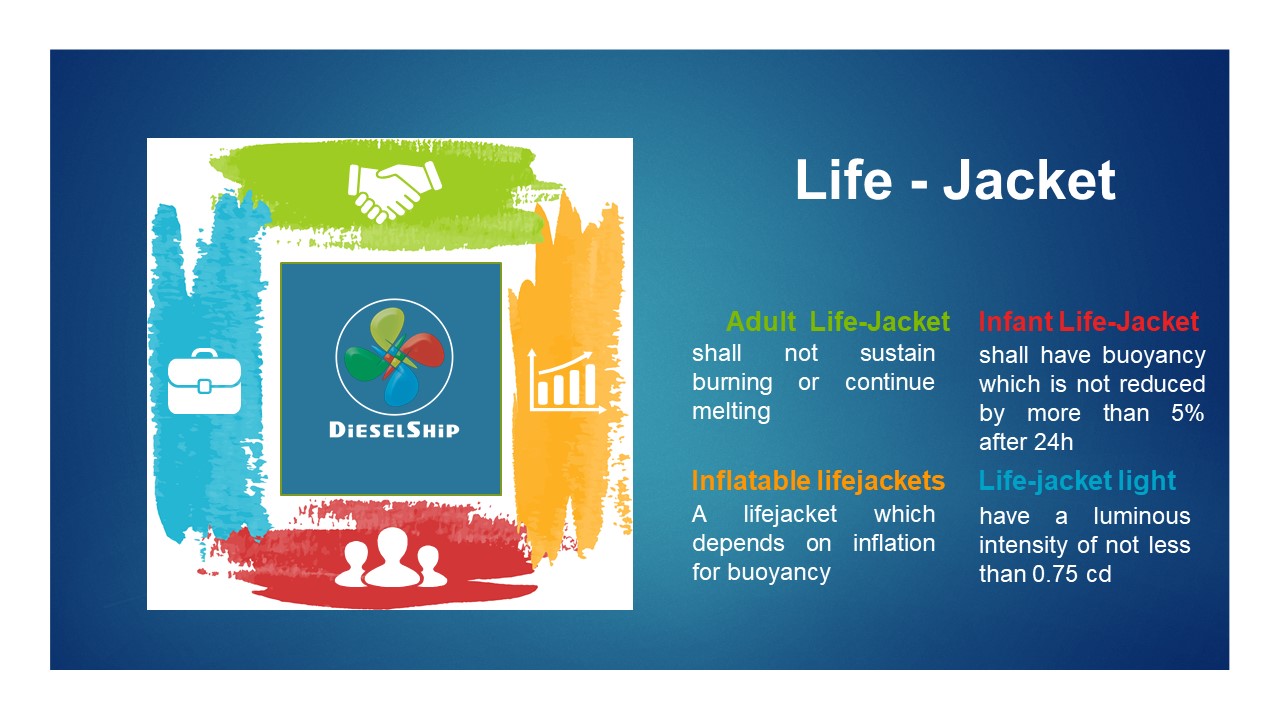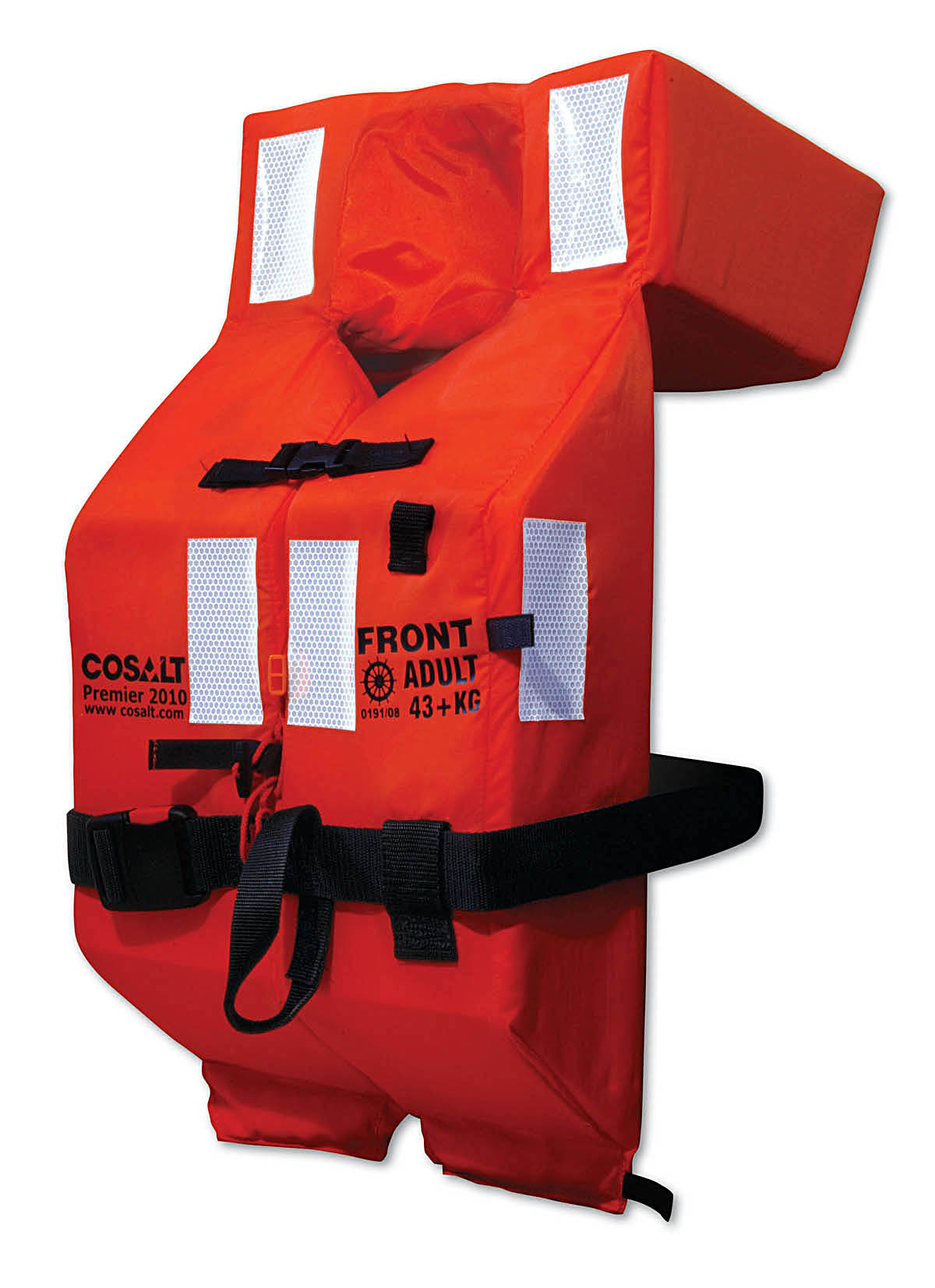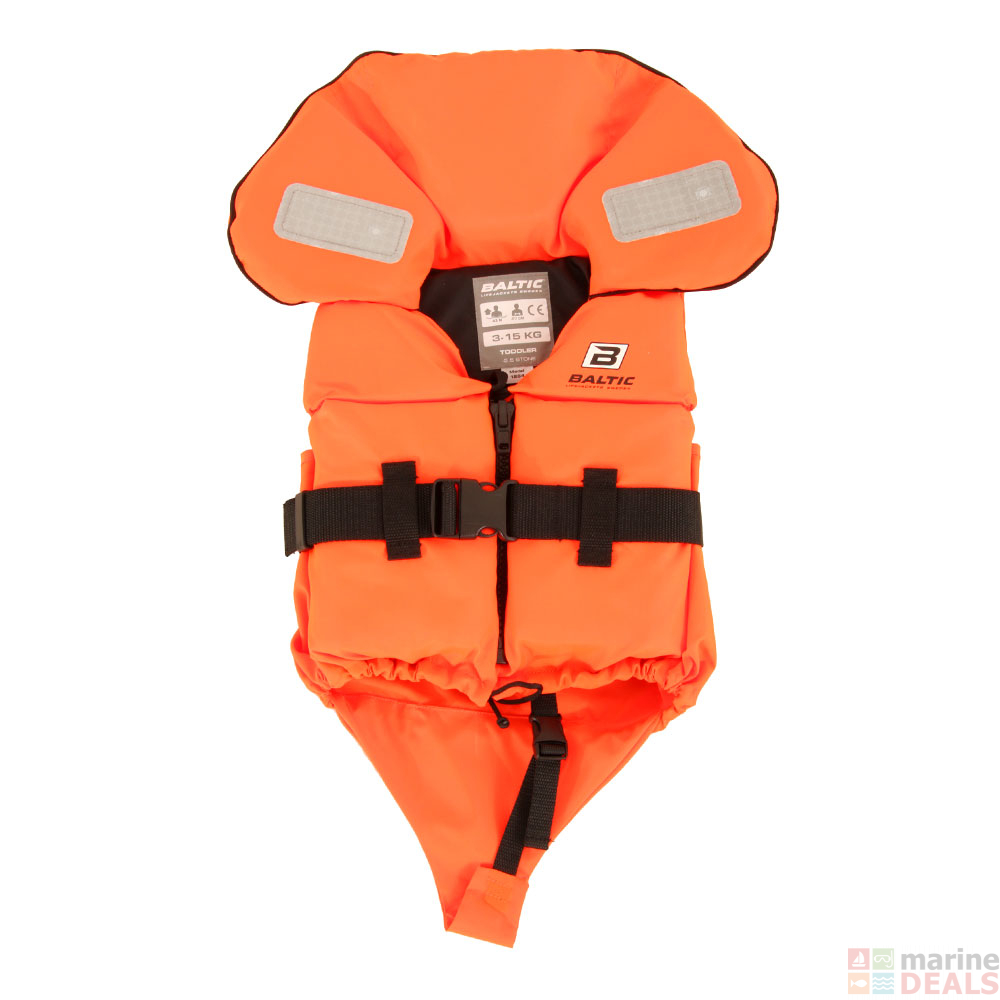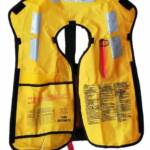Life-jackets

Life-jackets
Adult Life-Jacket
 An adult life-jacket shall be so constructed that:
An adult life-jacket shall be so constructed that:
- shall not sustain burning or continue melting after being totally enveloped in a fire for a period of 2 seconds.
- at least 75% of persons, who are completely unfamiliar with the lifejacket, can correctly don it within a period of one min without assistance, guidance or prior demonstration;
- after demonstration, all persons can correctly don it within a period of one minute without assistance;
- it is clearly capable of being worn in only one way or, as far as is practicable, cannot be donned incorrectly;
- it is comfortable to wear;
- it allows the wearer to jump from a height of at least 4.5 m into the water without injury and without dislodging or damaging the life jacket.
- shall have buoyancy which is not reduced by more than 5% after 24h submersion in fresh water.
- shall be fitted with a whistle firmly secured by a cord
An adult life jacket shall have sufficient buoyancy and stability in calm fresh water to:
- lift the mouth of an exhausted or unconscious person not less than 120 mm clear of the water with the body inclined backwards at an angle of not less than 20° from the vertical position;
- turn the body of an unconscious person in the water from any position to one where the mouth is clear of the water in not more than 5 s.
- shall allow the person wearing it to swim a short distance and to board a survival craft.
Child Life-jacket
A child lifejacket shall be constructed and perform the same as an adult lifejacket except as follows:
- donning assistance is permitted for small children;
- it shall only be required to lift the mouth of an exhausted or unconscious wearer clear of the water a distance appropriate to the size of the intended wearer;
- assistance may be given to board a survival craft, but wearer mobility shall not be significantly reduced.
In addition to the markings with approval information including the Administration which approved it, and any operational restrictions, a child lifejacket shall be marked with:
- the height or weight range for which the lifejacket will meet the testing and evaluation criteria recommended by the Organization in A.689.(17)
- a “child” symbol as shown in the “child’s lifejacket” symbol adopted by the Organization in A.760(18)
Inflatable Life-Jacket
A lifejacket which depends on inflation for buoyancy shall have not less than two separate compartments and comply with the all requirements for ordinary lifejacket, and shall:
- inflate automatically on immersion, be provided with a device to permit inflation by a single manual motion and be capable of being inflated by mouth;
- in the event of loss of buoyancy in any one compartment be capable of complying with the all requirements for ordinary lifejacket;
- shall have buoyancy which is not reduced by more than 5% after 24h submersion in fresh water after inflation by means of the automatic mechanism.
Life-jacket light
Life-jacket light shall:
- have a luminous intensity of not less than 0.75 cd in all directions of the upper hemisphere;
- have a source of energy capable of providing a luminous intensity of 0.75 cd for a period of at least 8 hours;
- be visible over as great a segment of the upper hemisphere as is practicable when attached to a lifejacket;
- be of white color.
If the light referred above is a flashing light it shall, in addition:
- be provided with a manually operated switch; and
- flash at a rate of not less than 50 flashes and not more than 70 flashes per min with an effective luminous intensity of at least
0.75 cd.





